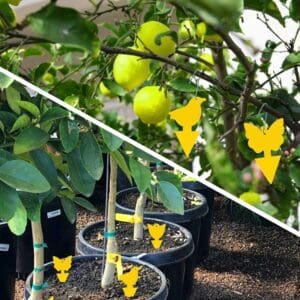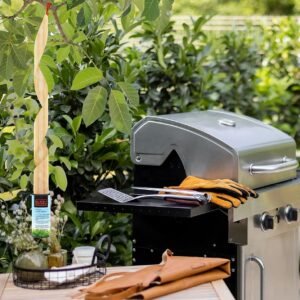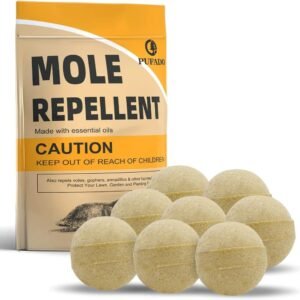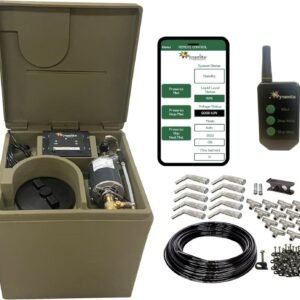How to Identify and Kill Wood-Damaging Pests
Are you concerned about the potential damage that wood-destroying pests can cause to your home or building? From termites and carpenter ants to powderpost beetles and wood borers, these insects have the ability to weaken and destroy wood structures, posing significant risks. In this article, we will guide you on how to identify these wood-damaging pests and provide effective solutions to control and prevent infestations. By understanding their characteristics and employing the right treatment methods, you can ensure the longevity and safety of your wooden structures. Whether you’re dealing with an existing infestation or looking for preventative measures, we’ve got you covered. Let’s dive in and conquer those pesky pests together!
Termites
Termites are known as the most destructive of the wood-destroying insects. They cause billions of dollars in damage to structures in the U.S. each year. Termites feed on cellulose material found in wood, paper, and other plant-based products. The most common types of termites include subterranean termites and drywood termites.
Subterranean termites build their colonies in the soil and can create mud tubes to access food sources above ground. They are often found in areas with high moisture levels. Drywood termites, on the other hand, live directly in the wood they consume. They do not require contact with the soil and can infest any part of a structure.
Signs of termite infestation include hollow-sounding wood, mud tubes, discarded wings, and termite droppings (also known as frass). You may also notice tight-fitting doors and windows, as termites can cause the wood to warp. If you suspect a termite infestation, it’s important to act quickly to minimize damage.
Methods to kill termites include chemical treatments, such as liquid termiticides and termite baits. Liquid termiticides are applied to the soil around the structure to create a barrier that repels or kills termites as they try to enter. Termite baits, on the other hand, are placed in strategic locations around the property to attract termites and eliminate the colony.
Carpenter Ants
Carpenter ants excavate wood to create their nests, which can weaken structures over time. Unlike termites, carpenter ants do not consume wood but remove it to expand their living areas. They prefer moist, rotting wood but can invade healthy wood structures as well.
Signs of carpenter ant infestation include the presence of large, winged ants (known as swarmers), sawdust-like frass, rustling sounds coming from the walls, and small openings in wood surfaces. You may also notice ants actively foraging for food, especially at night.
To kill carpenter ants, it’s important to locate and destroy the nest. This can be challenging as the nests are often hidden within walls or other inaccessible areas. One method is to use ant baits that contain slow-acting insecticides. The ants will carry the bait back to the nest, effectively eliminating the colony. Another approach is to use insecticidal dusts or foams to directly treat the nest or the areas where ants are active.
Powderpost Beetles
Powderpost beetles lay eggs in cracks of wood, and their larvae bore through it, creating a fine, powdery sawdust. They can cause significant damage to wooden structures and furniture, particularly in seasoned hardwoods.
Signs of powderpost beetle infestation include small, round exit holes in the wood, frass resembling fine sawdust, and powdery residue on wood surfaces. You may also notice damage to wooden furniture, flooring, or structural timbers.
To kill powderpost beetles, it’s important to identify and treat the affected wood. This can involve removing and replacing infested wood or applying insecticidal treatments directly to the affected areas. The choice of treatment will depend on the extent of the infestation and the type of wood being treated.
Carpenter Bees
Carpenter bees drill into wood to create nests for their offspring. The round, smooth holes they leave behind can be a gateway for moisture and other insects, leading to further damage. Carpenter bees are solitary, but repeated nesting in the same structure can result in considerable wood damage.
Signs of carpenter bee infestation include round entry holes, coarse sawdust near the holes, and the presence of bees flying around wood structures. You may also notice yellowish stains on the wood surface caused by bee excrement.
To kill carpenter bees, it’s important to treat the entry holes and the tunnels inside the wood. This can be done by using insecticidal dusts, foams, or sprays specifically formulated for carpenter bees. It’s important to treat the holes during the evening or early morning when bees are less active.
Wood Borers
Wood borers encompass various beetle species that infest and damage wood. The larvae bore through the wood, leaving behind exit holes and frass. They can weaken the structure from the inside. Wood borers can affect both hardwoods and softwoods, including furniture, structural timbers, and even musical instruments.
Signs of wood borer infestation include small, round exit holes in the wood, frass resembling fine sawdust, and the presence of adult beetles or larvae. You may also notice weakened or damaged wood, especially in areas with high humidity.
To kill wood borers, it’s important to identify the species of beetle and treat the affected wood accordingly. This may involve removing and replacing infested wood or applying insecticidal treatments directly to the affected areas. The treatment choice will depend on the extent of the infestation and the type of wood being treated.
Prevention and Early Detection
Prevention is crucial when it comes to protecting wood structures from wood-damaging pests. By implementing preventive measures, you can minimize the risk of infestation and damage. Here are some tips for preventing wood-damaging pests:
-
Remove or treat decaying wood: Remove any decaying wood from around your property, as it can attract wood-damaging pests. If you have wooden structures that can’t be removed, treat them with wood preservatives to deter pests.
-
Maintain good ventilation: Proper ventilation reduces moisture levels, making wood less attractive to pests like termites and powderpost beetles. Make sure attics, crawl spaces, and basements are adequately ventilated.
-
Keep wood dry: Moisture is a magnet for many wood-damaging pests. Avoid water leaks or condensation issues that can lead to damp wood. Ensure proper drainage around your property and promptly fix any plumbing or roof leaks.
-
Remove food sources: Pests need a source of food to survive. Store firewood away from your home and elevated off the ground. Keep your property free of debris and other organic materials that pests can feed on.
Early detection is also crucial in preventing extensive damage caused by wood-damaging pests. Regular inspections of your property, especially in areas prone to infestation, can help you identify signs of pests before they become a major problem. Look for signs like frass, exit holes, sawdust, or any unusual damage to wood structures. If you suspect an infestation, consult a professional pest control company for proper identification and treatment options.
Bora-Care
Bora-Care is a borate-based treatment that is effective in preventing and controlling wood-destroying insects, including termites, carpenter ants, powderpost beetles, and other pests that can damage wood. Here’s how Bora-Care works:
Mechanism: Bora-Care is a concentrated borate mineral salt solution that, when applied to wood, penetrates deep into the wood fibers. It essentially makes the wood inedible and toxic to wood-destroying insects. When insects consume or come into contact with treated wood, the borate disrupts their digestive system, leading to dehydration and death.
Application: Bora-Care is typically mixed with water and applied directly to wood surfaces by spraying, brushing, or rolling. It can be used on both new construction and existing structures. Bora-Care is particularly useful in areas where wood comes into contact with soil or moisture, which are common entry points and living spaces for these pests.
Prevention and Treatment: Bora-Care not only kills existing infestations but also prevents future infestations when applied correctly. It is effective against a wide range of wood-destroying insects and has a long-lasting effect, protecting the wood for years after application.
Timbor
Timbor is another borate-based treatment that is effective in preventing and controlling wood-destroying insects, including termites, carpenter ants, powderpost beetles, and other pests that can damage wood. Here’s how Timbor works:
Mechanism: Timbor is a wood preservative in powder form, made from disodium octaborate tetrahydrate, a natural borate compound. Like Bora-Care, Timbor acts as both an insecticide and fungicide. When applied to wood, it prevents infestation by making the wood lethal to pests that try to eat or bore through it.
Application: Timbor is mixed with water and then applied to wood surfaces via spraying, brushing, or dipping. It’s especially effective for pretreating wood in new construction but can also be used in existing structures to treat accessible wood surfaces.
Prevention and Treatment: Timbor is effective at preventing infestations and controlling existing ones. It is particularly useful against fungi and wood-destroying insects. Because it is a powder that is mixed with water, it can penetrate wood to a certain extent, providing long-term protection.
Both Bora-Care and Timbor work by creating an environment within the wood that is inhospitable to pests. By interfering with the pests’ ability to digest the wood, they effectively prevent and control infestations. However, the effectiveness of these treatments can depend on the extent of existing infestations, the application method, and the condition of the wood being treated. It’s also important to follow the manufacturer’s instructions and safety guidelines when using these products.
Effectiveness and Considerations
When using wood-destroying pest treatments such as Bora-Care and Timbor, there are several factors to consider in terms of effectiveness and safety:
Factors affecting effectiveness: The effectiveness of these treatments can depend on various factors, including the type of wood being treated, the extent of infestation, the application method, and adherence to manufacturer’s instructions. It’s important to address these factors to ensure optimal results.
Application methods: Both Bora-Care and Timbor can be applied using different methods, such as spraying, brushing, or dipping. The choice of application method may depend on the accessibility of the wood surfaces and the desired level of penetration.
Safety guidelines: When using any wood-destroying pest treatment, it’s important to prioritize safety. Follow the manufacturer’s instructions and safety guidelines closely. Use appropriate protective equipment, such as gloves and goggles, and ensure proper ventilation during application. Keep children and pets away from treated areas until the product has dried or according to the manufacturer’s recommendations.
By considering these factors and following proper protocols, you can effectively use wood-destroying pest treatments to protect your wooden structures from infestation and damage. It’s also advisable to consult a professional pest control company for advice and assistance in choosing the most appropriate treatment for your specific situation.









